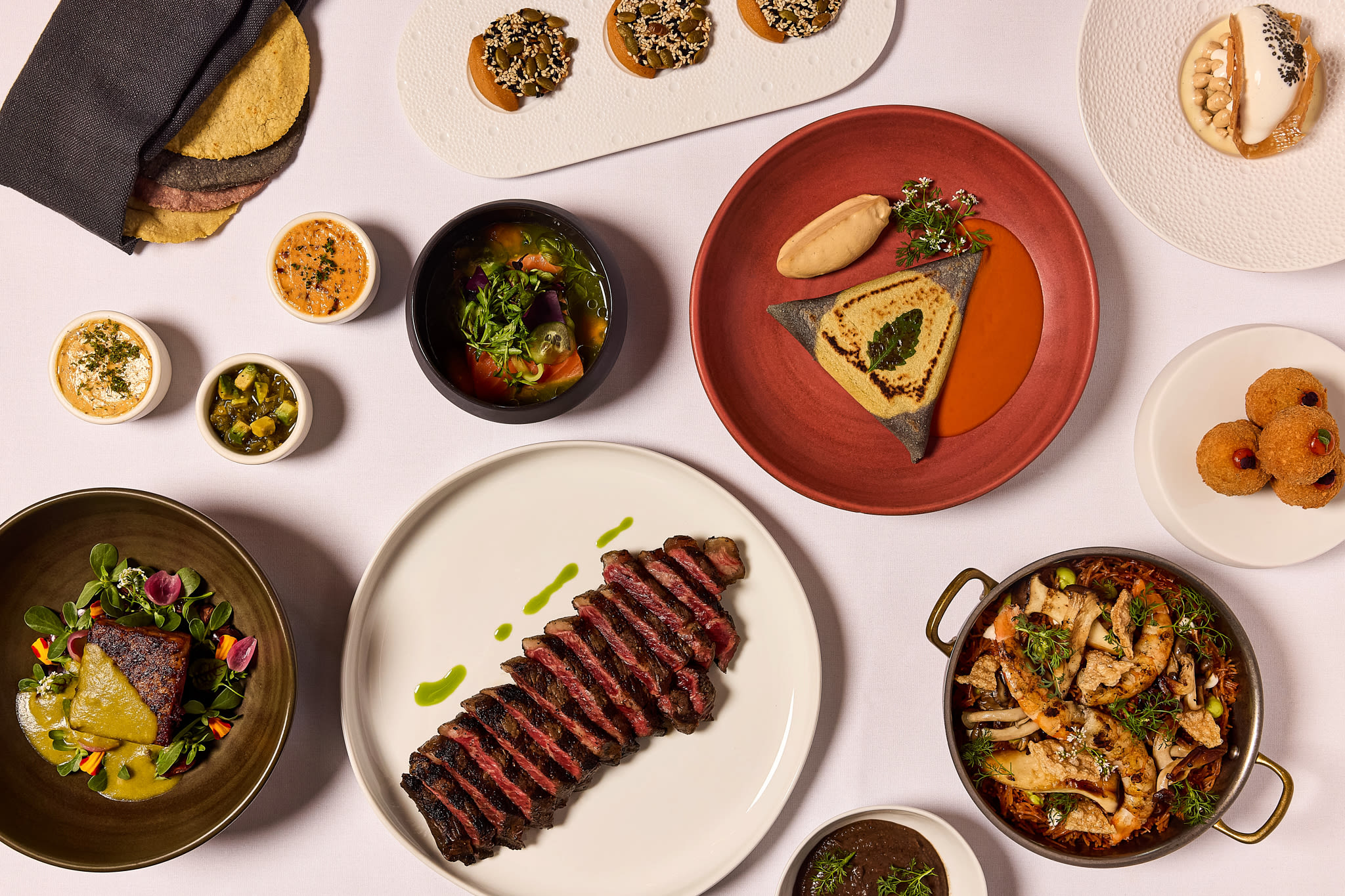Where Do Chefs Eat in Oaxaca? El Mangalito
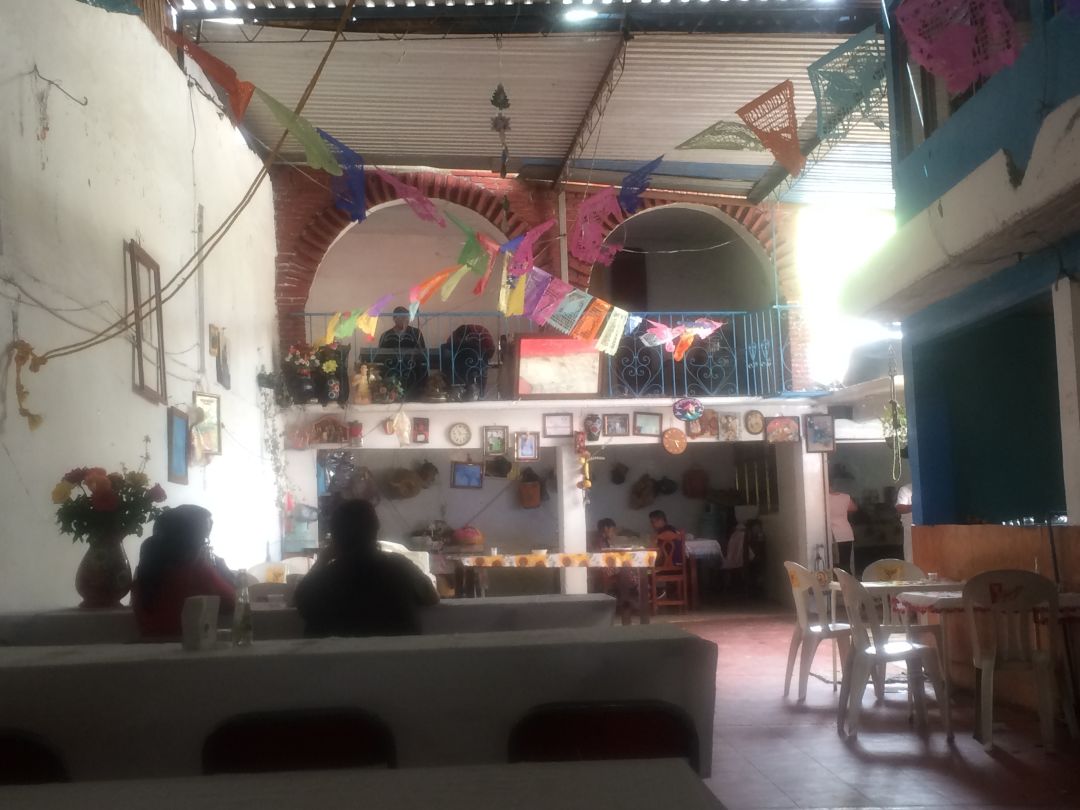
Inside El Mangalito. The apparent veil on this and the photos that follow? Smoke and pork fat.
Image: Alice Levitt
The owners of Origen, one of Oaxaca's foremost upscale restaurants, hope you like meat. Chef Rodolfo Castellanos, the first winner of Mexico's "Top Chef," and his wife, Lizette Rodriguez, a pastry chef by training, want to take you half an hour out of the city to the small, walnut-tree-lined town of Zaachila for lunch. You do indeed like meat, a lot, in fact, so you get in the car with them and a cook from the restaurant and try to avoid the striking teachers blockading many of the area's streets.
The same, seemingly endless group of protestors, active since May with no real end in sight, has set up tents on Callejon Hidalgo in front of Origen. Not surprisingly, it's been extremely damaging to business, Castellanos says. The couple will be getting out of Oaxaca more soon, though, to help Origen co-owners (and Houston restaurant legends) Hugo Ortega and wife Tracy Vaught with the autumn opening of Xochi. Castellanos will consult on the Oaxacan-focused menu.
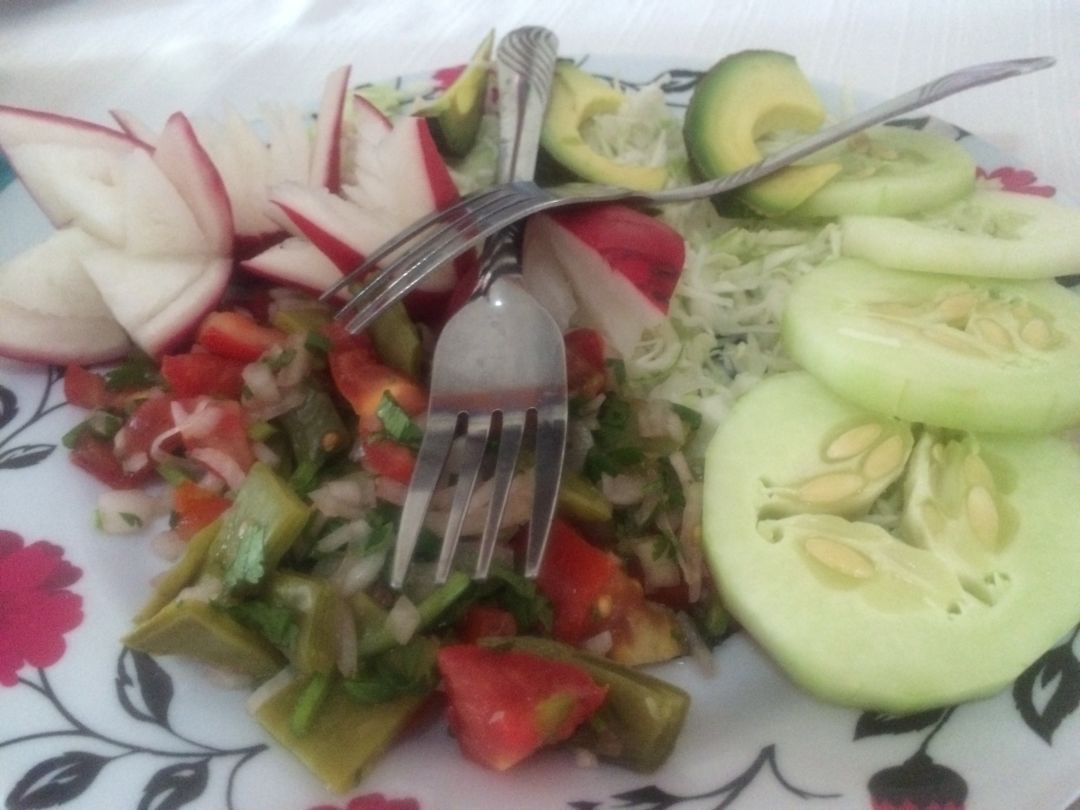
The fixings for black bean soup with a pork hock.
Image: Alice Levitt
But political upheaval and business strife are taking a backseat today. At the blue garden gate of El Mangalito, painted with the same Corona logo that decorates apparently every business in town, drab reality transforms into Technicolor.
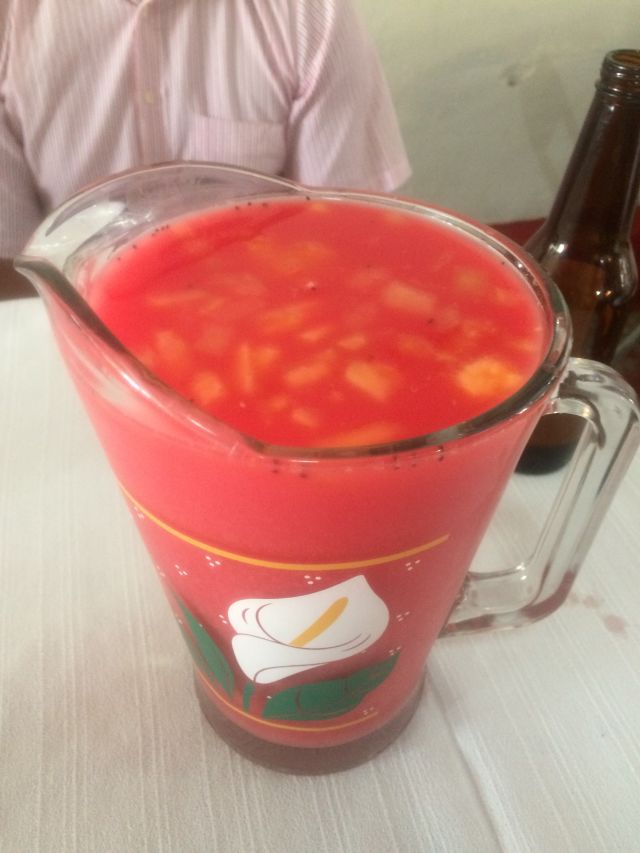
Horchata/tuna blend.
Image: Alice Levitt
You're joined by a couple of the Castellanos' friends, a surfer who manages vacation rentals on the coast and a chubby, boisterous fellow in a too-tight Red Sox jersey. Though the restaurant is half an hour from the city, the group does the rounds at nearly every table. Castellanos' parents are finishing their meal.
Shortly after you're seated, Alejandro Ruiz, the chef at Casa Oaxaca, gets a table of his own. It's the third time you've run into him in three days. Castellanos credits Ruiz with bringing traditional Oaxacan flavors into the realm of modern cuisine—think of him as the region's Robert Del Grande.
There is no menu at El Mangalito. Each day has its own pork-focused rewards that spring from the minds of the kitchen staff. Adding to the party atmosphere, a band plays, really just one man on keyboard, and another alternately singing off-key and blowing on a sax with slightly better tonal accuracy.
In the two hours you're there, they play the "Love Story" theme in Spanish twice. A kid, probably 12 or 13, leans against one side of the stage wearing a KISS t-shirt. You wonder if he likes these guys as much as he admires Gene Simmons and Peter Criss.
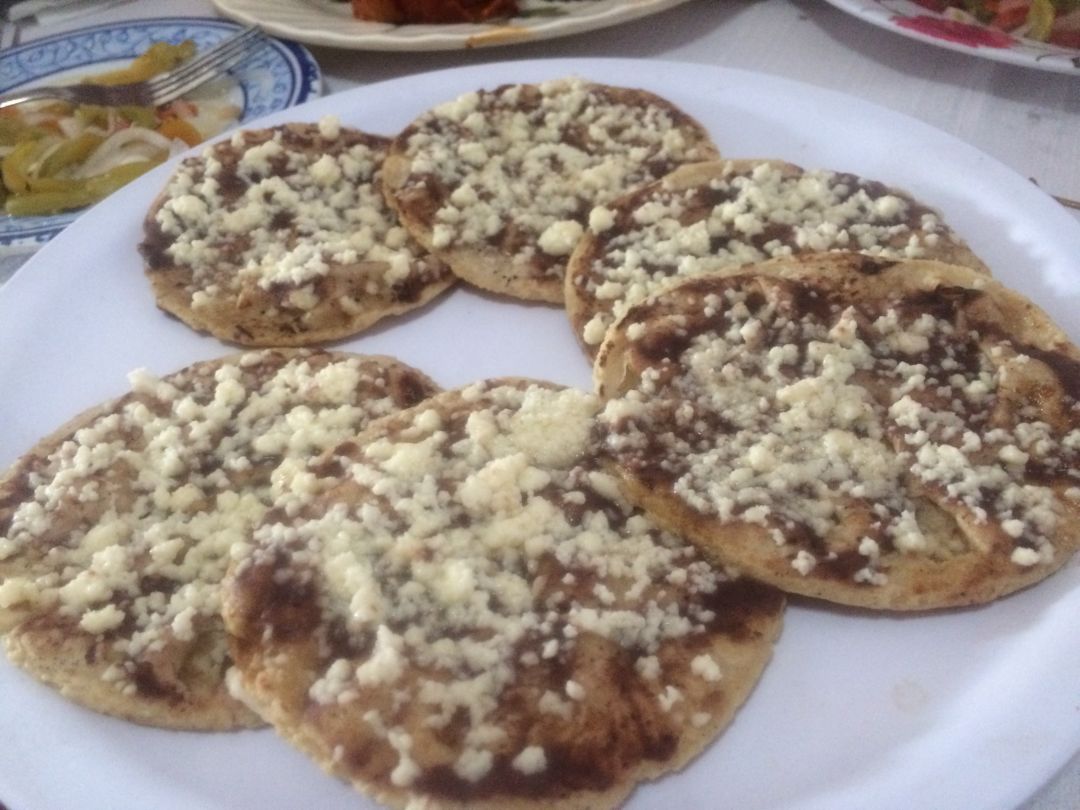
Memelas
Image: Alice Levitt
Mezcal is brought to the table in Canada Dry club soda bottles sealed with crumpled napkins. A couple of nights ago at Casa Oaxaca, Castellanos explained to you that higher quality mezcal typically isn't smoky—the flavor is employed to cover myriad impurities. These shots are heavy in both smoke and lip-singeing fire worlds away from the smooth sips the other night. Perhaps it's safer to stick to the pitcher. It holds a blend of starchy horchata and prickly pear juice, a plant known in Mexico as tuna.
The feast begins with thick black bean soup. A gelatinous chunk of pork hock bobs in the broth, dyed the same black. There are radishes, nopale salsa, pickled hot peppers and pickled potatoes, among other fixings, to accentuate the soup's comforting positives.
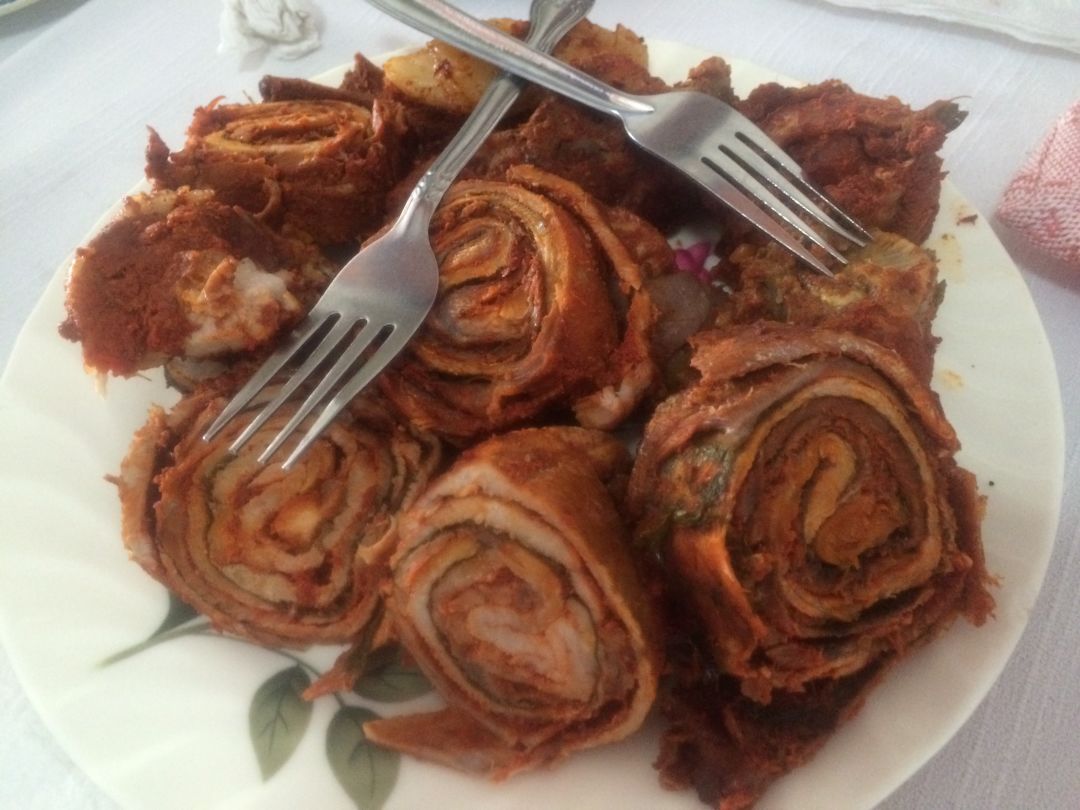
Achiote-and-chile-rubbed rolls and ribs.
Image: Alice Levitt
The rest of the barrage begins almost immediately. First there are memelas, the Oaxacan version of sopes, spread with lard and refried beans and dotted with tangy blobs of goat cheese.
Most plates hold more than one cut of pork. Above is one example, filled with both eminently tender ribs and thin slices of leg red with chiles and achiote. The rolls hide tarragon-like leaves of yerba santa. Their similarity to trompo makes them ideal for stuffing into a fresh, hot corn tortilla with some of the veggies intended for the soup and one of two different green salsas.
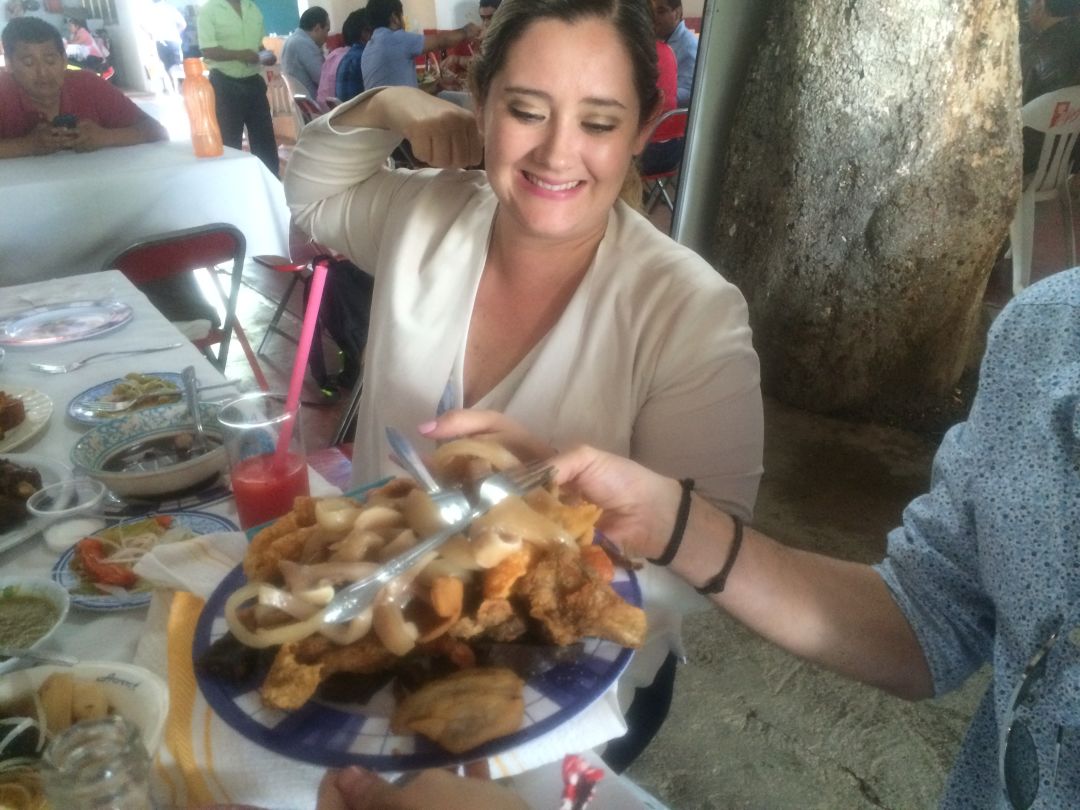
Rodriguez winds up to grab some pig parts.
Image: Alice Levitt
Chicharrónes are represented in practically every form, whether plain skin, skin attached to meat and shards of bone, or straight-up organ meat. Eating with VIPs has its fifth-quarter benefits: At one point, a server proffers a small plate of what initially look like fried wontons.
Upon closer inspection, the rosette-shaped fried flesh seems to reveal the thin, blue blood vessels of a stretch of intestine. But Rodriguez tells you that the server only told her "It is part of the female pork." Ovaries, perhaps? No matter, it's simply an argument that everything tastes good if it's fried.
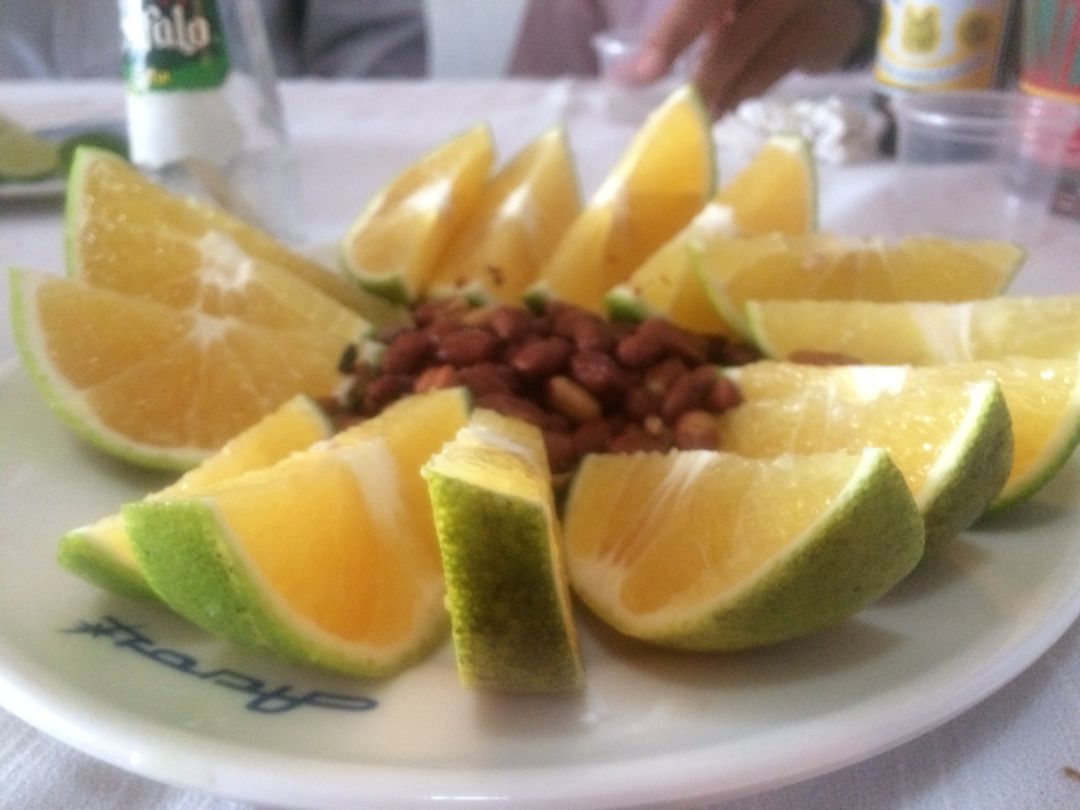
Orange and peanuts to cleanse the palate.
Image: Alice Levitt
There are more plates of ribs, more crisp bites of salty pork, which build in a ketonic blur. When you and your now mezcal-happy group can take no more (it's about 3:30 p.m. and dinner is yet to come), the server brings more mezcal, this time in a smaller glass Coke bottle. He also leaves a plate of salted, lightly spiced peanuts and slices of a green orange. Rodriguez explains that the color is typical in Oaxcan summers—the same trees produce fruit all year, but they're only the color of their name in the depths of winter.
The meal ends with small cups of vanilla-flavored nieves, a Mexican cousin to Italian ice. The flavor is real, evidenced by barky chunks of vanilla bean scattered throughout. But your crew, as serious about dessert as mezcal, stumbles to the car to head to Zaachila's town square. Stands selling pastries and more nieves fill the park, populated by feral but friendly dogs polite enough to know not to ask to share your sweets.
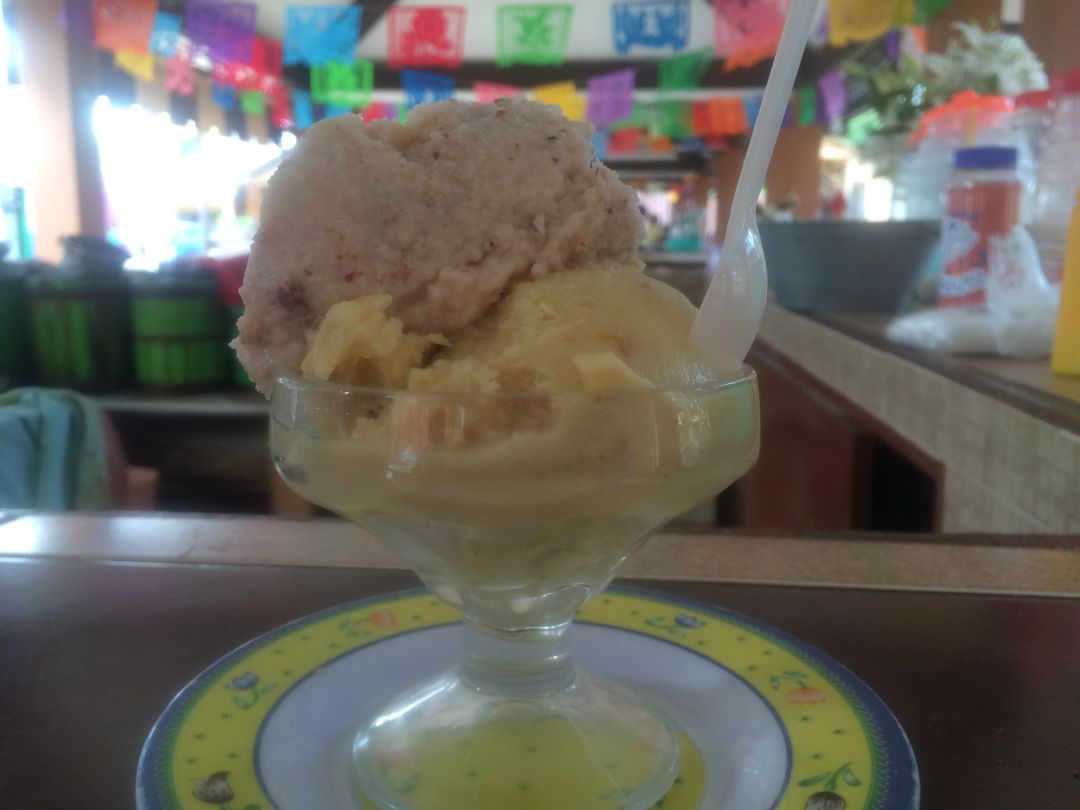
After lunch, nieves in the park.
Image: Alice Levitt
The Castellanos' favorite nieve vendor isn't open that day, but the group settles for another where an abuela fills glass cups with the full-flavored ice. You try several different varieties before settling on the local specialty, walnut crowded with crumbs of the nut itself, and nanche (byrsonima crassifolia), a yellow, pitted fruit that resembles a cherry, but tastes more like an intense cape gooseberry. Rodriguez says it's related to pouteria sapota, or mamey, another ultra-sweet fruit that makes an excellent nieve.
But the sugary, salty, fatty joys of the afternoon must come to an end. The Castellanos have to return to the tent city on Callejon Hidalgo and to feed the diners willing to brave the protestors. And you have to steel yourself for the next meal.

